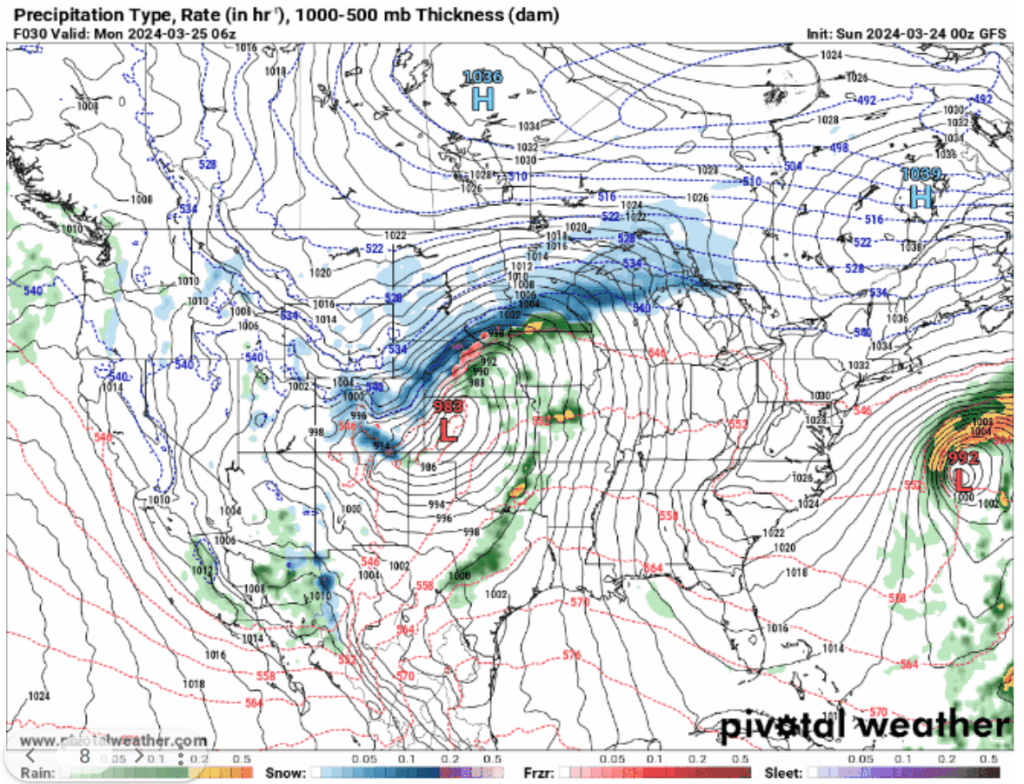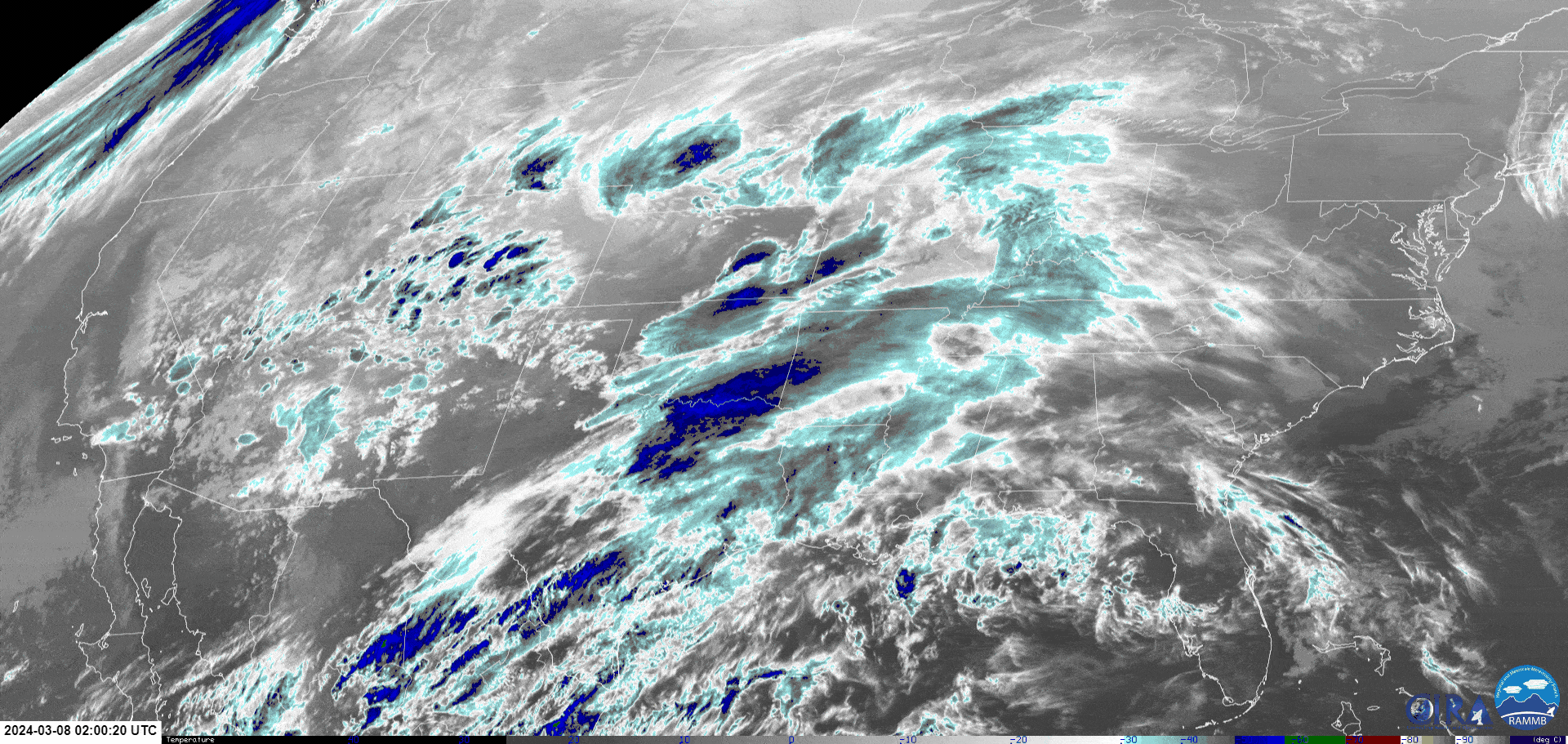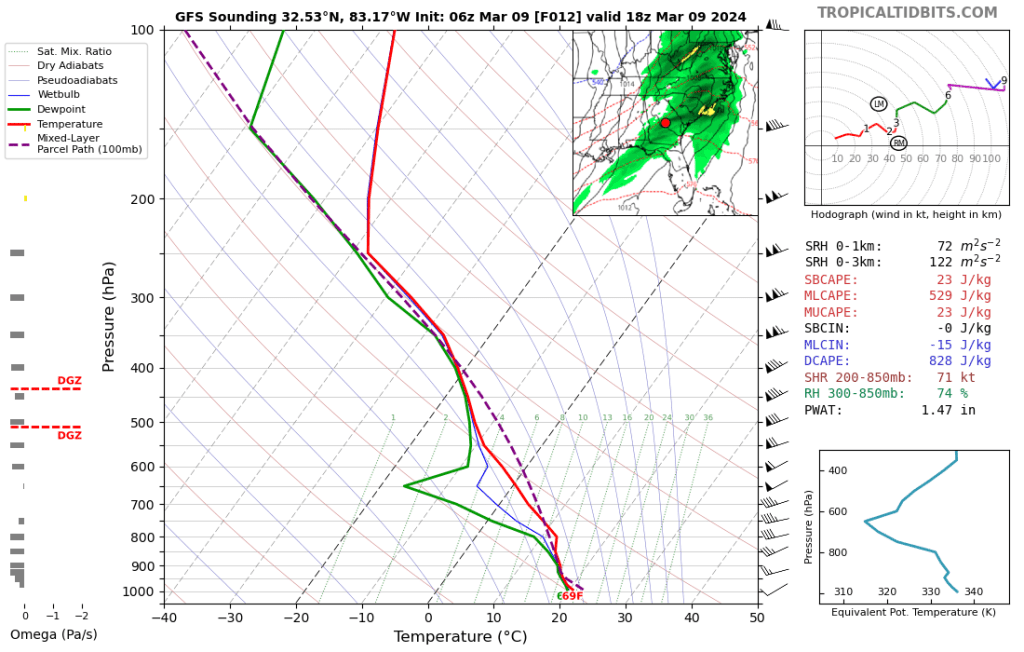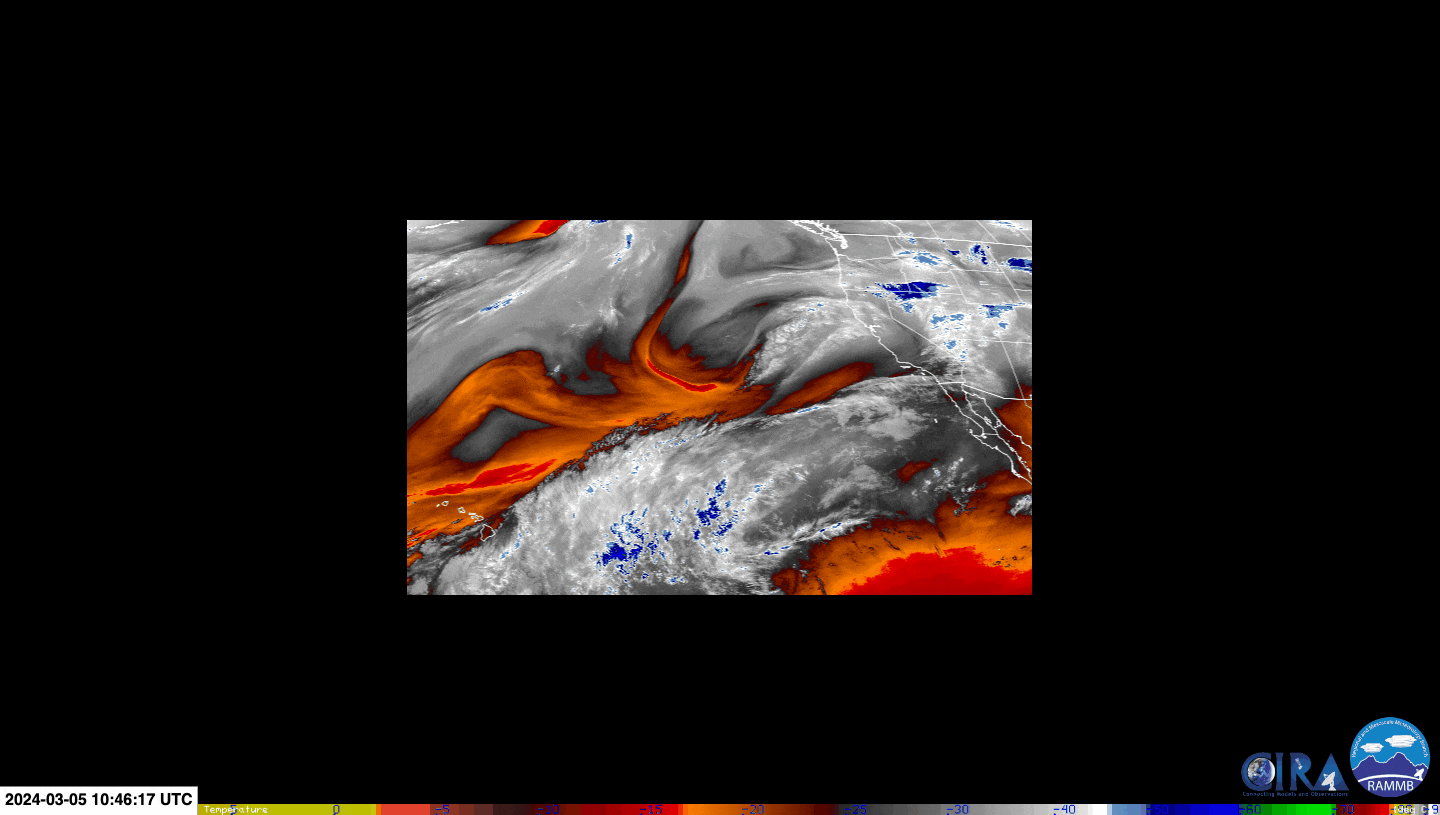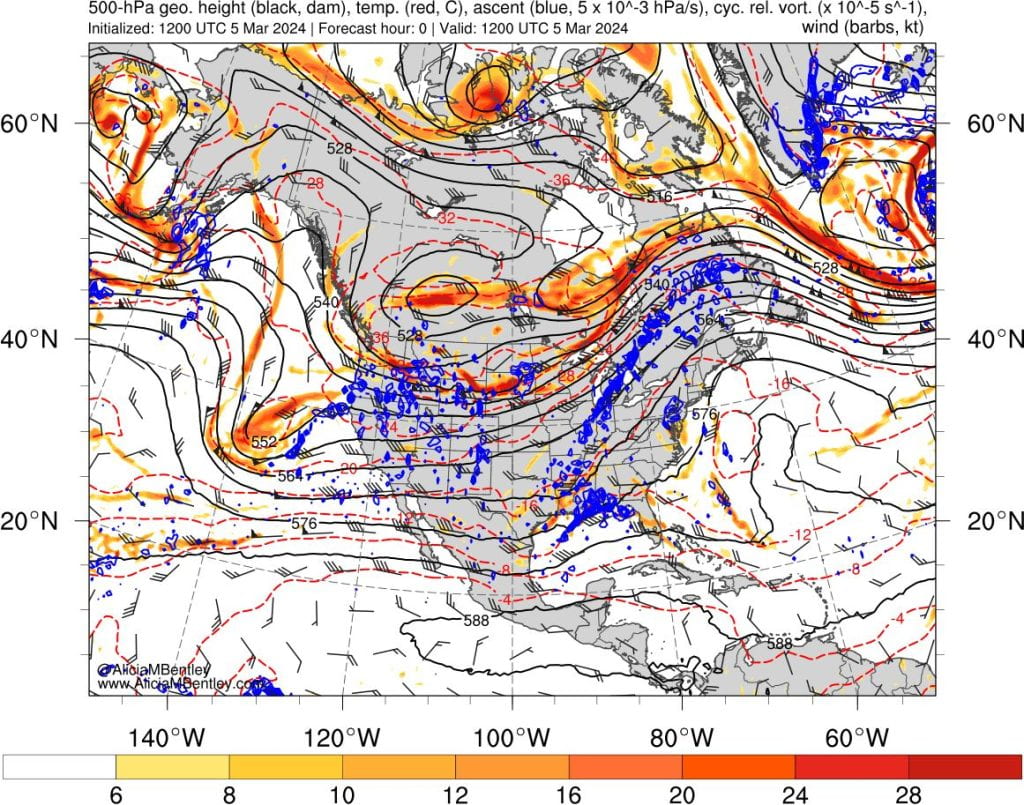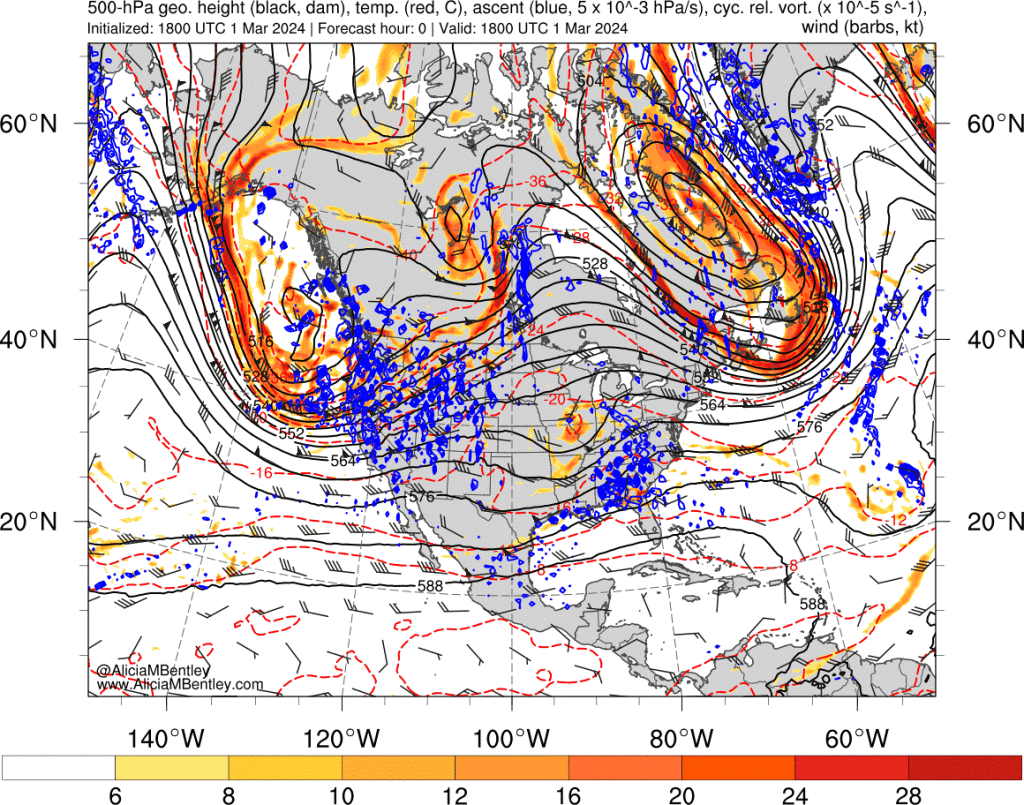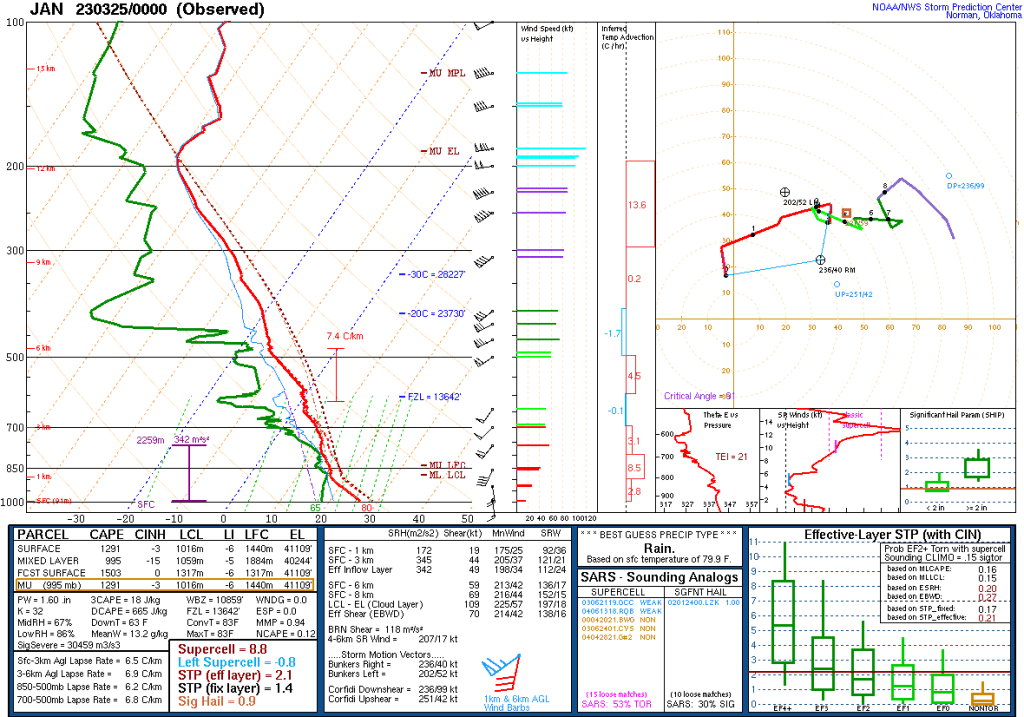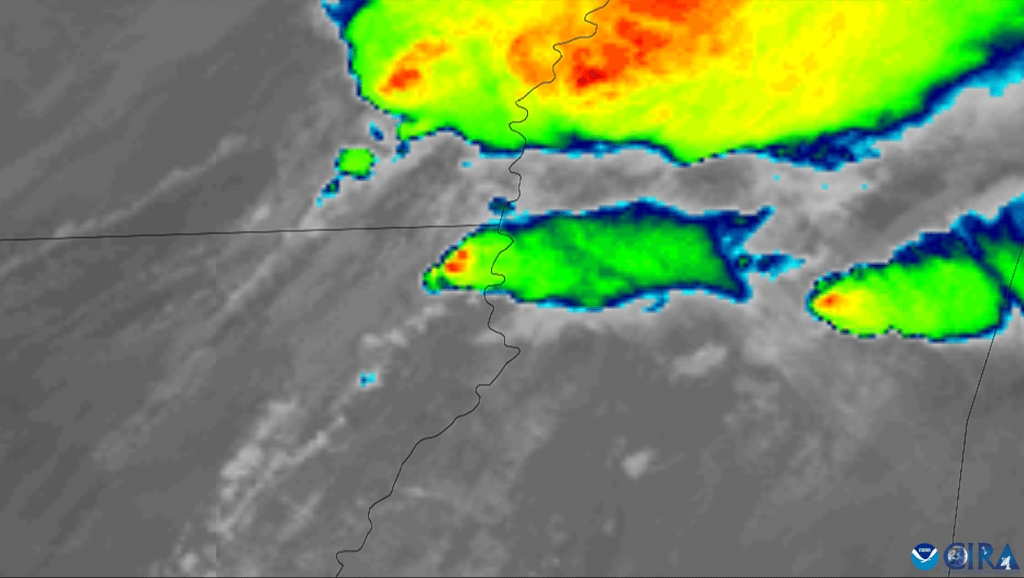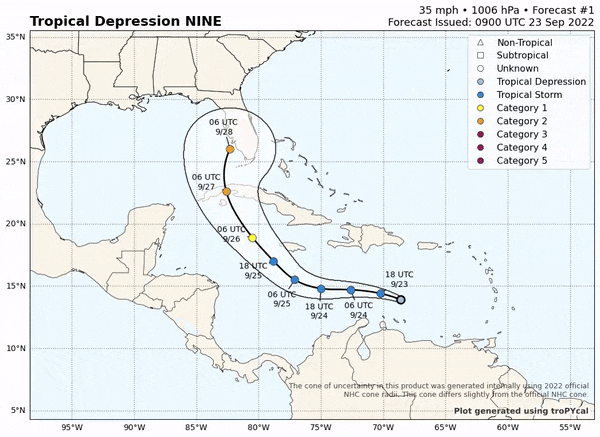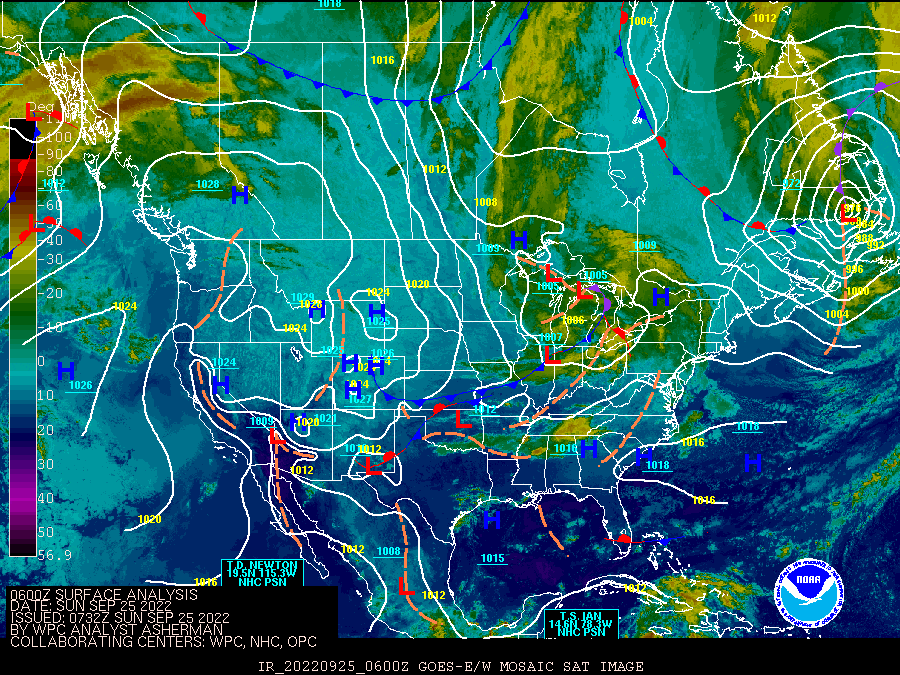Monday, April 1 brought bright sun and temperatures into the 80’s for the southeast U.S., but don’t be fooled, this quiet weather soon turned deadly. On Tuesday night, dangerous thunderstorms produced multiple tornadoes across the state. Fortunately, minor damage was the worst of these low-strength tornadoes, but amidst a disorganized storm under the cover of night, how did meteorologists recognize these tornadoes and keep the public safe?

Figure 1. Storm Prediction Center (SPC) Storm Reports, April 2, 2024 (from https://www.spc.noaa.gov/climo/reports/240402_rpts_filtered.gif)
Not Your Average Thunderstorm
Thunderstorms began to flare up Tuesday night as a cold front pushed into the warm, moist air over Alabama, with the potential for tornadoes. National Weather Service-Birmingham meteorologist Nathan Owen forecasted “areas that will have the best chance for tornado development will be south of I-20 and north of I-85 between 6pm and midnight.” He was right. However, the thunderstorms were not typical supercell thunderstorms that produce tornadoes. Supercells have a signature characteristic of hook shaped precipitation on its southern edge, known as a hook echo, as seen in the circle in Figure 2.
This feature frequently indicates tornadic activity, making issuing a tornado warning somewhat easier for meteorologists to see on radar, as the hook protrudes out of the supercell.
However, Tuesday night’s storm, as seen in the red box (the Tornado Warning) in Figure 3, did not have the structure of a supercell thunderstorm, so a hook was not able to help meteorologists identify the evolving tornado. The tornado was also surrounded by moderate to heavy rain, adding to the difficulty of identifying it.

Figure 2. Reflectivity Factor radar during the supercell that produced the El Reno Tornado, 2013 (from https://storymaps.arcgis.com/stories/9895d535c2a247e4997fb85493428be8)
Figure 3. Reflectivity Factor radar during Tuesday night’s storm (from RadarScope™)
No Hook Echo? No Problem
When meteorologists can’t observe a tornado based off of rain patterns on a standard reflectivity factor radar, they can use a storm relative velocity radar to detect rotational motion.
As seen in Figure 4, this radar encompasses two colors: green, indicating wind directed towards the radar, and red, indicating wind directed away from it. Because a tornado is characterized by rotating winds, pockets of green intertwined with red, or vice-versa, make obvious to meteorologists of escalating rotating motion indicative of a tornado.
However, due to Tuesday’s tornado being less intense, these pockets were not as apparent, but miniscule sections of lighter green and pink adjacent to each other reflected localized higher wind speeds with mild rotation, as seen in the red box.

Figure 4. Storm Relative Velocity radar (from Radar Scope™)
Rain & Wind Aren’t The Only Things Radar Can Detect
A correlation coefficient (CC) radar can also be used to observe tornadic activity. Dark, dull colors reflect something in the atmosphere being differently shaped or sized than its surroundings. However, reds, pinks, and whites reflect whatever is in the atmosphere having similar sizes and shapes, like a storm having only rain.
A tornado can produce a noticeable debris ball, or a circle of debris. This debris ball can contain objects of many different shapes and sizes, as tornadoes can pick up cars, trees, and roofs to name a few. The CC radar recognizes this variety in the atmosphere, and the debris ball is then indicated by darker colors of blue, gray, or black if the debris ball is elaborate.
Within the red box (the Tornado Warning) in Figure 5, there exists orange and yellow, different from the more solid pink colors elsewhere. Although not as apparent as a dark debris ball associated with a severe tornado, this color differentiation on the CC radar indicates slightly different shaped and sized constituents in the atmosphere, essentially something other than rain in this thunderstorm.
This mild debris ball being located where the rotating winds on the storm relative velocity radar are allowed NWS-Birmingham meteorologists to recognize this tornado and issue a Tornado Warning, despite the difficulties of this storm’s nature.

Figure 5. Correlation Coefficient (CC) radar (from RadarScope™)






